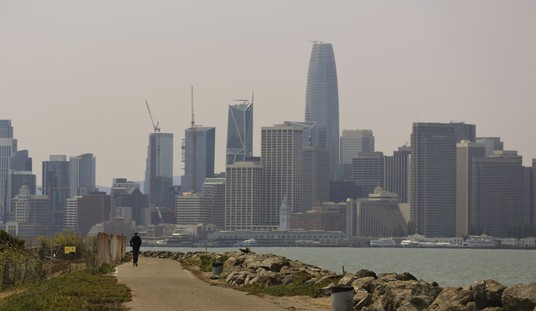Via Walter Russell Mead. To follow-up on Ed’s post this morning, with French boots on the ground and America providing logistical support, it’s time to start paying attention to Mali if you aren’t yet. The U.S. strategy here was simple, and familiar: Support the elected government against jihadis by training their army in counterterror operations. So far, so good — until last year, when a bunch of American-trained military commanders joined the rebellion in the north (which was soon taken over by jihadis) and another American-trained commander overthrew the government in a coup. The resulting dynamic, pitting a military autocracy against Islamist nuts, is also familiar from places like Egypt and Syria. And in case you thought otherwise, evidently American training and support can’t prevent it.
One reason Obama’s so eager to move U.S. military assets out of Afghanistan is that the game of whack-a-mole has now moved elsewhere — thanks in part to the western intervention against Qaddafi in Libya:
But all that deliberate planning collapsed swiftly when heavily armed, battle-hardened Islamist fighters returned from combat in Libya. They teamed up with jihadists like Ansar Dine, routed poorly equipped Malian forces and demoralized them so thoroughly that it set off a mutiny against the government in the capital, Bamako…
The same American-trained units that had been seen as the best hope of repelling such an advance proved, in the end, to be a linchpin in the country’s military defeat. The leaders of these elite units were Tuaregs — the very ethnic nomads who were overrunning northern Mali…
“The aid of the Americans turned out not to be useful,” said another ranking Malian officer, now engaged in combat. “They made the wrong choice,” he said of relying on commanders from a group that had been conducting a 50-year rebellion against the Malian state…
“I was sorely disappointed that a military with whom we had a training relationship participated in the military overthrow of an elected government,” Gen. Carter F. Ham, the head of the Africa Command, said in a speech at Brown University last month . “There is no way to characterize that other than wholly unacceptable.”
The French moved in last week with 500+ troops and air power in order to halt the jihadis’ drive from the north towards Bamako, the capital. But just yesterday, Al Qaeda and its associates managed to infiltrate and take the town of Diabaly, which is inside southern Mali and was thought to be safely protected by the military. How’d they sneak in there? By crossing over into Mauritania and then circling back behind the army’s lines towards the town. That’s familiar too from Afghanistan, but the problem here is much, much bigger. An enormous swath of north Africa is potentially in play:
The area under the rule of the Islamist fighters is mostly desert and sparsely populated, but analysts say that due to its size and the hostile nature of the terrain, rooting out the extremists here could prove even more difficult than it did in Afghanistan. Mali’s former president has acknowledged, diplomatic cables show, that the country cannot patrol a frontier twice the length of the border between the United States and Mexico.
AQIM operates not just in Mali, but in a corridor along much of the northern Sahel. This 7,000-kilometer (4,300-mile) long ribbon of land runs across the widest part of Africa, and includes sections of Mauritania, Niger, Algeria, Libya, Burkina Faso and Chad.
“One could come up with a conceivable containment strategy for the Swat Valley,” said Africa expert Peter Pham, an adviser to the U.S. military’s African command center, referring to the region of Pakistan where Taliban fighters once dominated. “There’s no containment strategy for the Sahel, which runs from the Atlantic Ocean to the Red Sea.”
“Al-Qaida never owned Afghanistan,” said a UN diplomat who was held hostage by Al Qaeda in the Islamic Magreb. “They do own northern Mali.” Some experts think the group and its associates now have surface-to-air missiles which they stole from the Malian army bases they overran and, of course, from the Qaddafi weapons depots that were looted in the aftermath of the Libyan revolution. It’s not just AQIM there either: Other jihadi groups like Ansar Dine are flowing into the north of the country, partly because it was a safe haven and partly because it’s now quickly turning into the hottest global flashpoint with the infidel crusaders. (Jihadi leaders are threatening France, of course.) What Obama, Chuck Hagel, and John Brennan plan to do about all of this, especially in an age of defense cuts, is unclear, although it’s a safe bet that the left’s dream of ending the age of drone warfare will have to wait. According to the Times, one plan favored by U.S. strategists is to target the jihadi groups’ leaders in hopes that taking them out will cause the groups to fall apart. Another option is to wait until an Awakening-type backlash develops among the local as they’re treated to a taste of the glories of sharia, but how you’d go about organizing that Awakening without many, many troops on the ground is also unclear. You see, though, how one intervention can beget another: Obama went into Libya to oust Qaddafi because he wanted to purchase some goodwill with Muslims during the Arab Spring, and now he’ll likely have to go into Mali to manage the spillover — which Islamists will demagogue to try to destroy any goodwill America has with Muslims after the Arab Spring.
Anyway. As I say, it’s time to get up to speed if you’ve been ignoring this. National Journal has a useful primer to help.
Update: That didn’t take long.








Join the conversation as a VIP Member